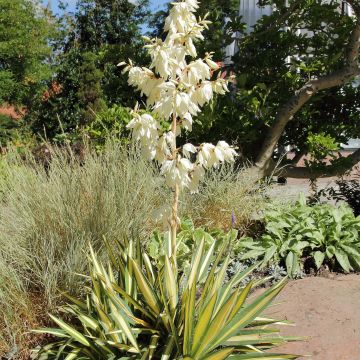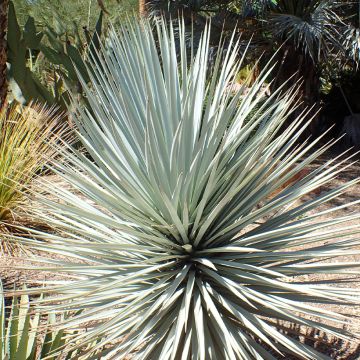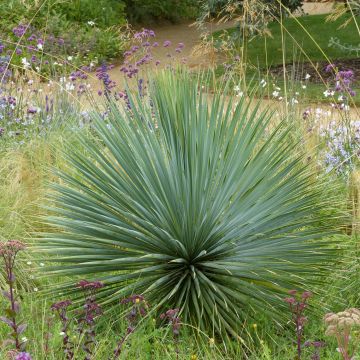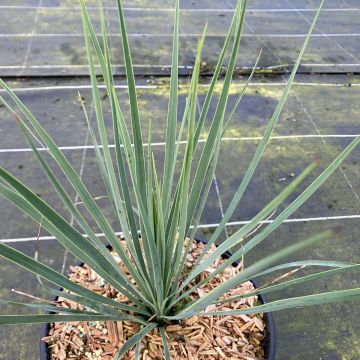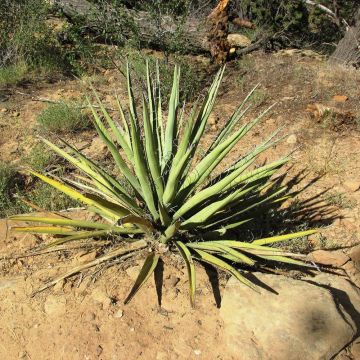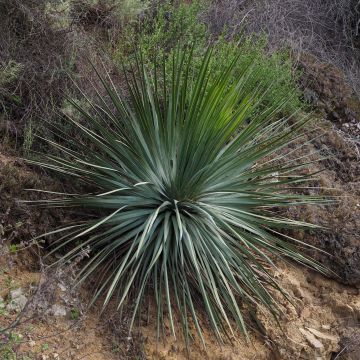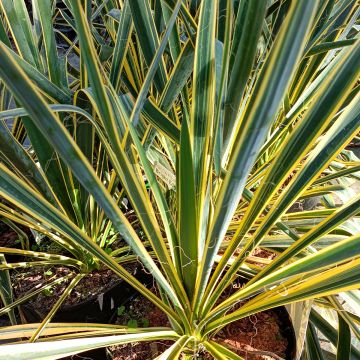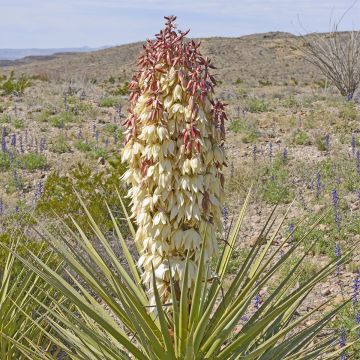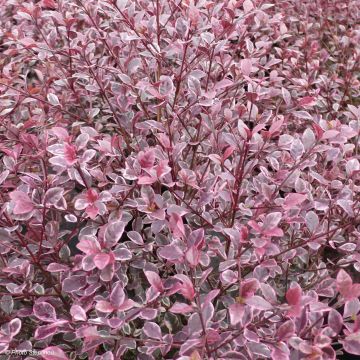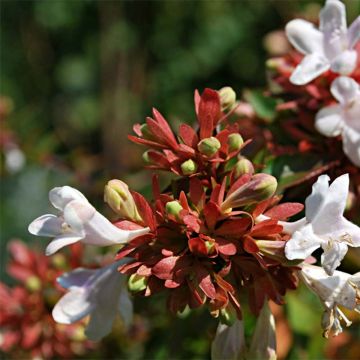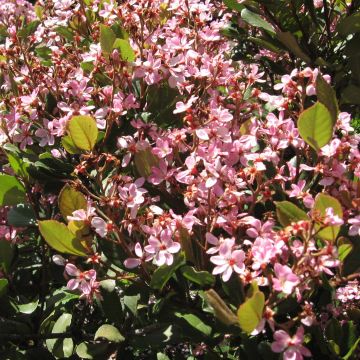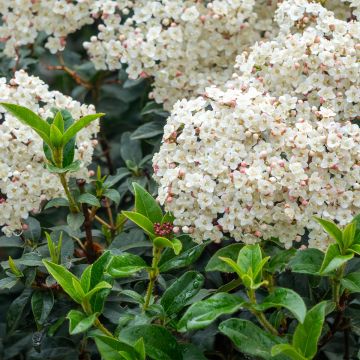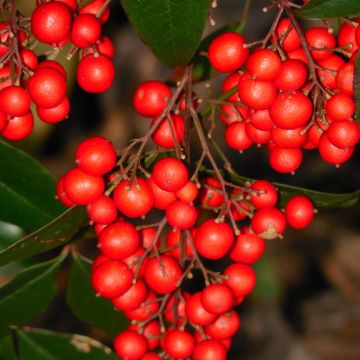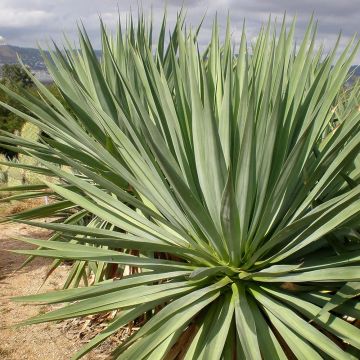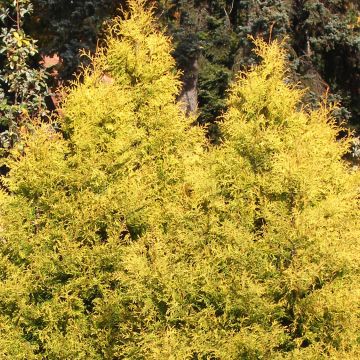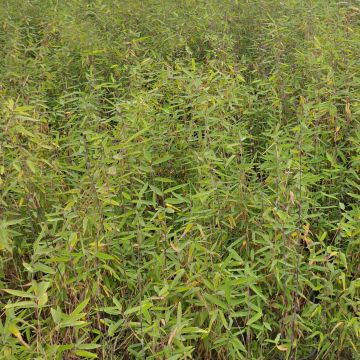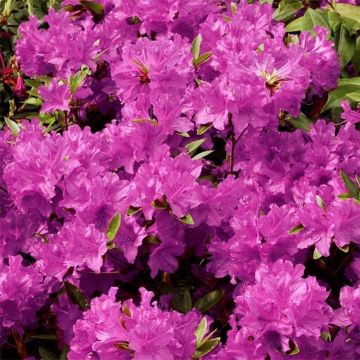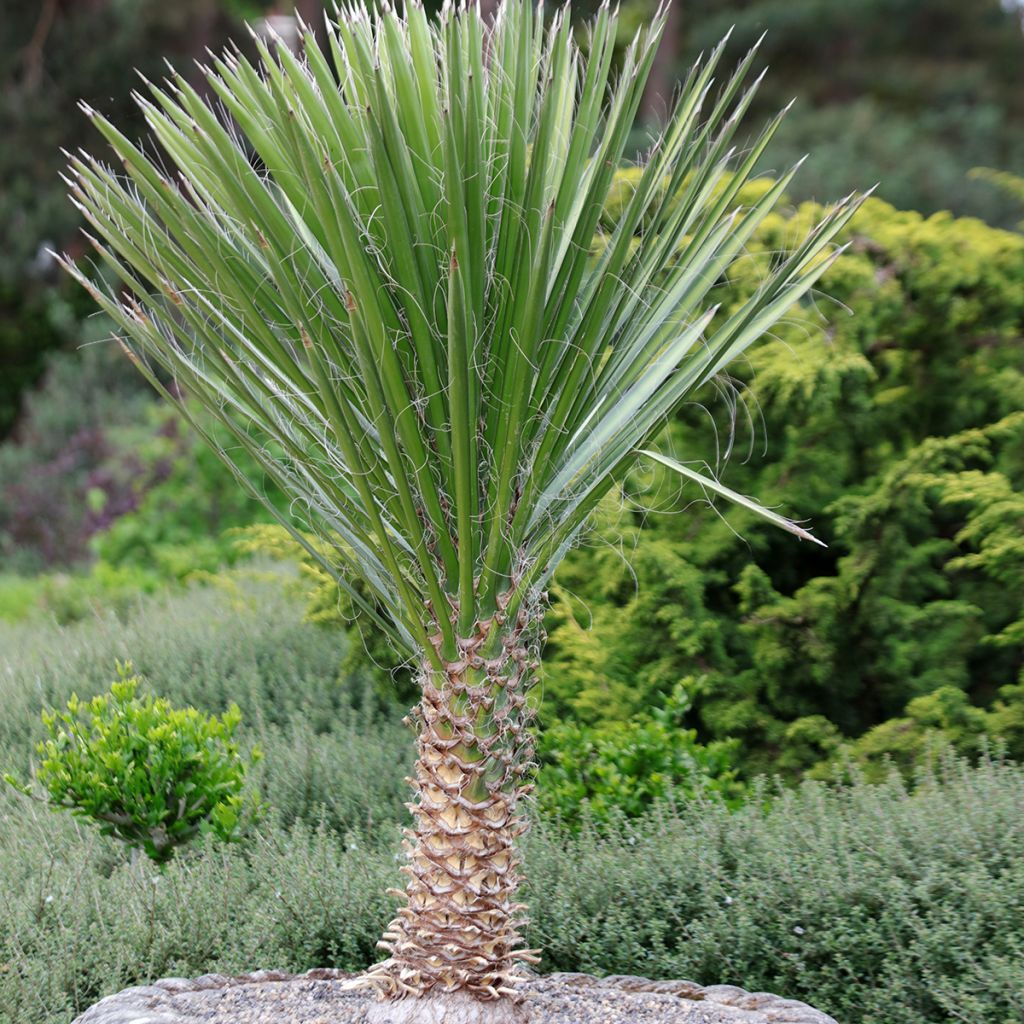

Yucca filamentosa
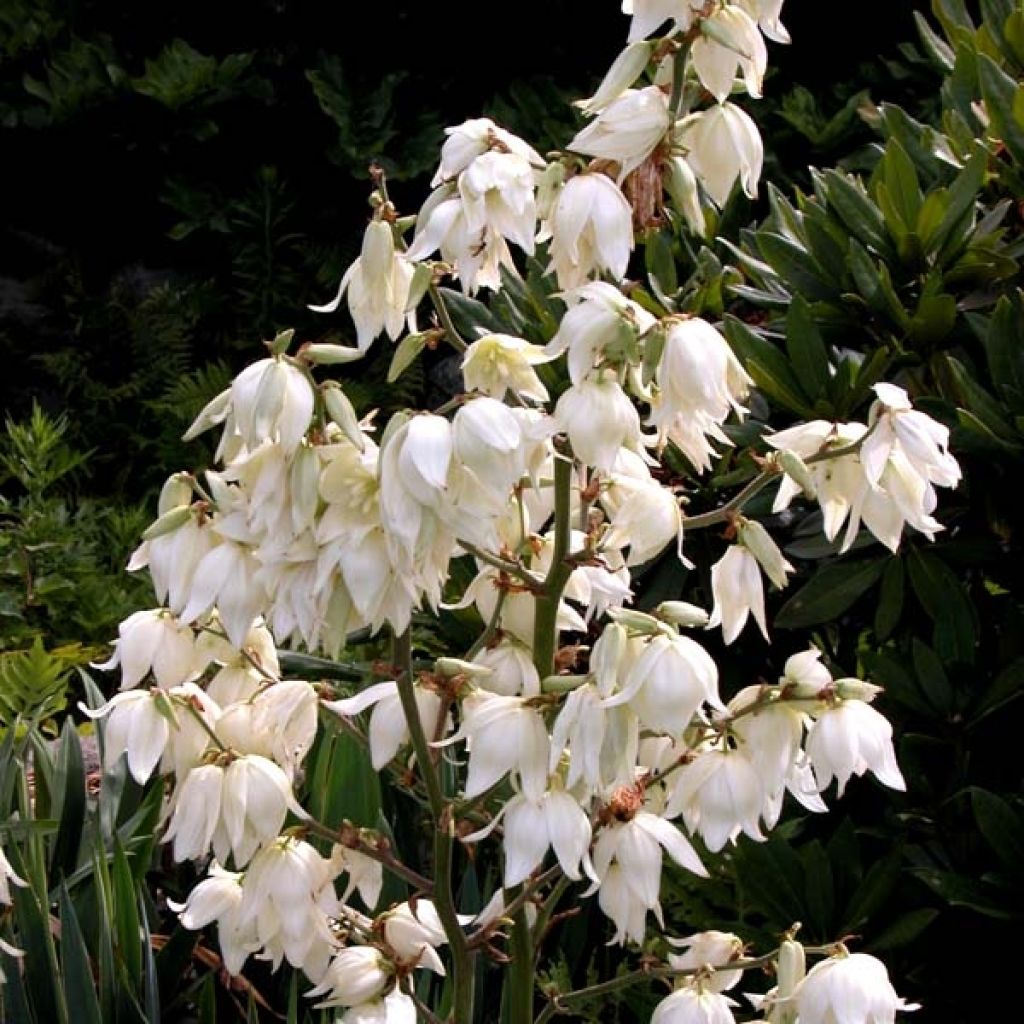

Yucca filamentosa
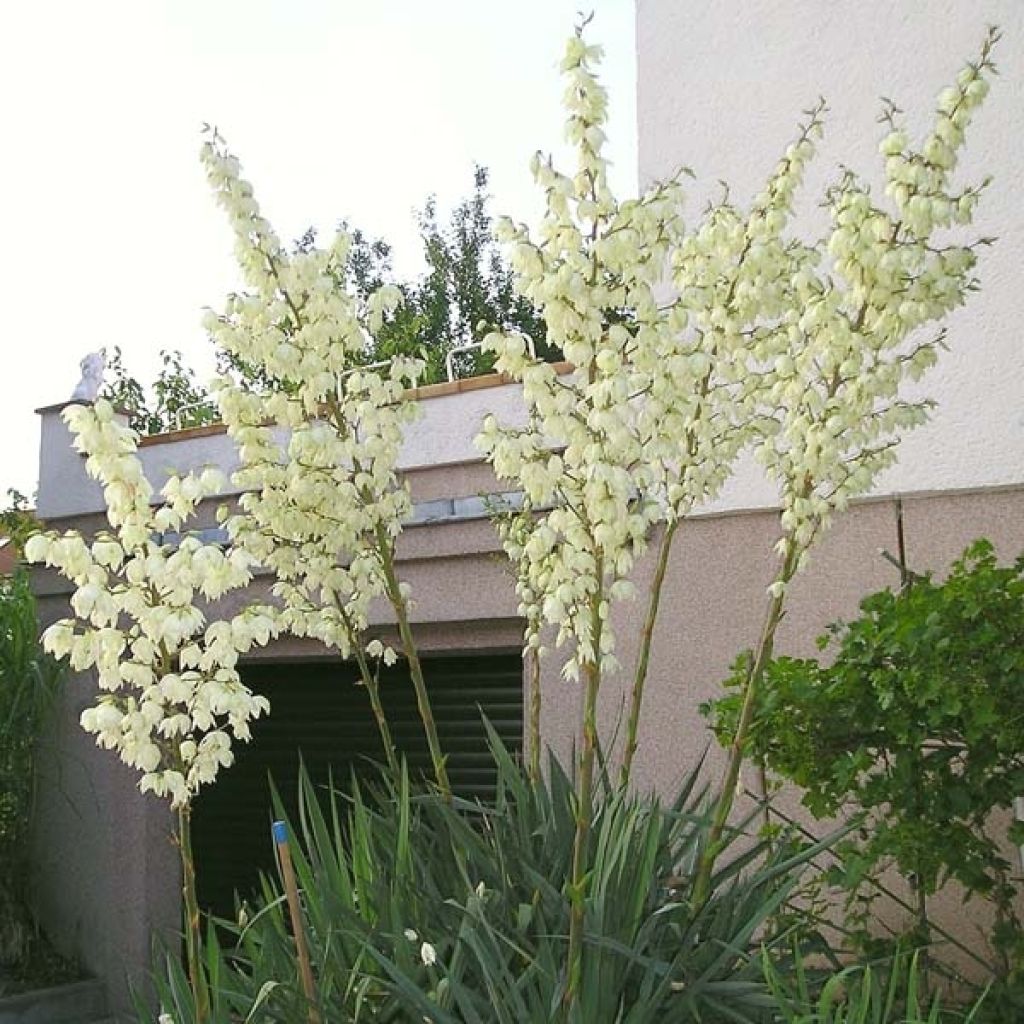

Yucca filamentosa
Yucca filamentosa
Yucca filamentosa
Needle Palm, Adam's Needle and Thread, Spanish Bayonet, Bear-Grass, Carolina Silk Grass, Our Lord's Candle, Spoonleaf Yucca
This item cannot be shipped to the selected country
Delivery charge from €5.90
Delivery charge from €5.90
Delivery charge from €5.90
More information
Schedule delivery date,
and select date in basket
This plant carries a 24 months recovery warranty
More information
We guarantee the quality of our plants for a full growing cycle, and will replace at our expense any plant that fails to recover under normal climatic and planting conditions.
From €5.90 for pickup delivery and €6.90 for home delivery
Express home delivery from €8.90.
From €5.90 for pickup delivery and €6.90 for home delivery
Express home delivery from €8.90.
From €5.90 for pickup delivery and €6.90 for home delivery
Express home delivery from €8.90.
Does this plant fit my garden?
Set up your Plantfit profile →
Description
The Yucca filamentosa, also known as the Threadleaf Yucca, is a plant with a highly exotic appearance, forming a bushy clump of dark green upright leaves, bordered by whitish filaments, that create a large bunch, remaining attractive throughout the year. When mature, this plant produces an impressive summer flowering that can reach up to 2m (6.6ft) in height. The upper part of the flower spike bears numerous pendulous flowers resembling large cream-white bells. Being hardy and anchored by a strong rootstock, this yucca is perfect for rockeries, slopes, or dry gardens.
The Threadleaf Yucca is a plant belonging to the agave family. It is a botanical species native to the northeastern United States (Virginia) and the southeastern United States, spreading westward to Louisiana. Generally lacking a trunk, the plant develops multiple stems that bear rosettes of long and narrow leaves tapering towards the tips, pointing upwards. Its growth, initially slow, reaches a rate of 20 to 30cm (11.8in) per year. The rosettes measure approximately 90cm (35.4in) in height, and the leaves are bordered by the characteristic filaments of the species. Each rosette has around sixty leaves that are 50 to 75cm (29.5in) long, rough, fairly flexible, ending in a small sharp spine. The flower spikes appear in early summer, later or earlier depending on the climate, on plants several years old. The flowers, resembling tulips in size and shape, are cream-white in colour and appear on a green and sturdy flower spike arranged in a paniculate manner. They face downwards. The rosette dies after flowering followed by the emergence of small juvenile rosettes at the base of the plant.
The Threadleaf Yucca, hardy well beyond -15°C (5°F), in well-drained soil and easy to grow, will thrive in any properly drained soil, even dry and poor, or in arid conditions. It should be kept away from pathways and young children due to its pointed leaves. This plant is ideal for structuring a large rockery or for brilliantly occupying the centre of an exotic flower bed. It can be placed alone or combined with Puyas, numerous Agaves, Yuccas, and other opuntias that also thrive in desert-like environments.
The flower petals are edible; they can be served as a garnish or prepared as fritters. The flower spike, before the flowers appear, can also be cooked and eaten, similar to asparagus.
Report an error about the product description
Yucca filamentosa in pictures
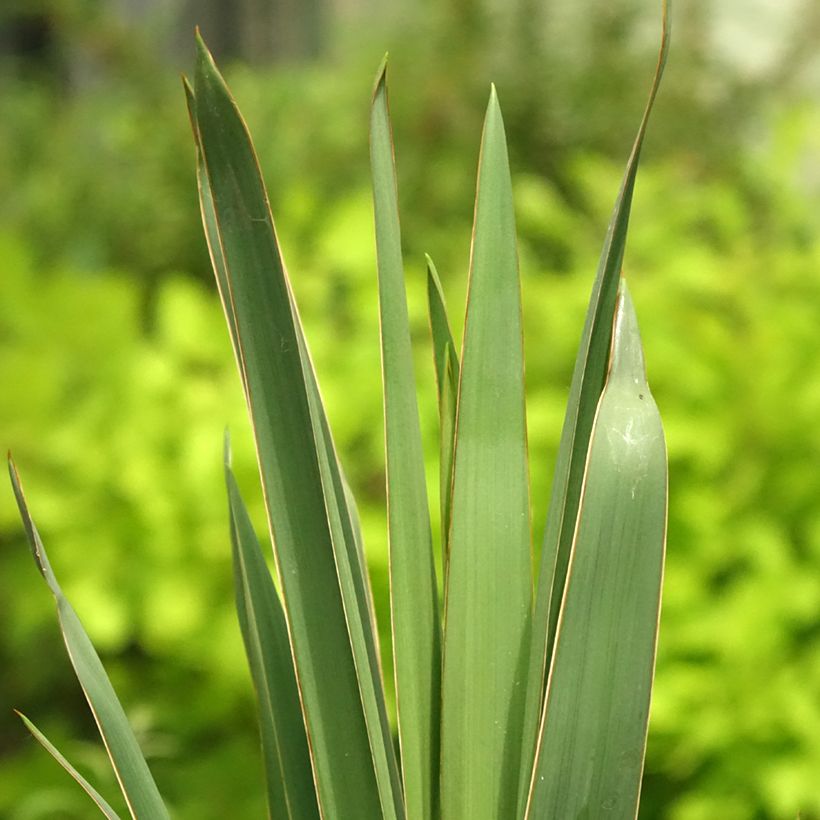

Plant habit
Flowering
Foliage
Botanical data
Yucca
filamentosa
Agavaeae
Needle Palm, Adam's Needle and Thread, Spanish Bayonet, Bear-Grass, Carolina Silk Grass, Our Lord's Candle, Spoonleaf Yucca
North America
Other Yucca
Planting and care
Plant the Yucca filamentosa in a very sunny location. An adult specimen will withstand brief frosts of around -20°C (-4°F) if the soil is well-drained. In mild climates plant in autumn, especially when hot and dry during summer. This species does not tolerate excess moisture, especially when combined with cold weather: plant in a well-drained soil, ideally in a large rock garden, a raised bed with gravel-enriched soil, or a rocky slope. It is not picky about the soil's pH, which can be slightly acidic, sandy, rocky, or even slightly chalky. It can tolerate poor soil, but its growth will be slightly faster in more fertile soil. Water during the first 2 years, especially during hot and dry periods. Remove faded stems.
Your Yucca is beautiful, but it doesn't flower? It is probably too young or has only been in your garden for 3 or 4 years. Indeed, it seems that this plant takes time to establish itself and only blooms after 8 years. Then, depending on the sunlight and climate, it will flower every year or every two or three years.
Propagation:
The Yucca can be easily propagated by cuttings of trunk portions. It should be noted that plants derived from cuttings produce fewer roots than those from seeds, making them susceptible to strong winds and less resistant to drought in hot climates.
Fertilization in Yuccas:
In their countries of origin, Yucca flowers are pollinated only by a few species of tiny primitive butterflies devoid of proboscis, which live in symbiosis with the plant, such as Prodoxus. The female of these butterflies carries pollen grains from one flower to the stigma of another. She lays a few eggs at the base of the flower. The young caterpillars feed on some of the seeds. Since Prodoxus is not part of our fauna, most Yuccas cultivated in our gardens never produce fruits. Only Yucca aloifolia is capable of it because its pollination does not depend on the presence of these micromoths.
Planting period
Intended location
Care
-
, onOrder confirmed
Reply from on Promesse de fleurs
Evergreen shrubs
Haven't found what you were looking for?
Hardiness is the lowest winter temperature a plant can endure without suffering serious damage or even dying. However, hardiness is affected by location (a sheltered area, such as a patio), protection (winter cover) and soil type (hardiness is improved by well-drained soil).

Photo Sharing Terms & Conditions
In order to encourage gardeners to interact and share their experiences, Promesse de fleurs offers various media enabling content to be uploaded onto its Site - in particular via the ‘Photo sharing’ module.
The User agrees to refrain from:
- Posting any content that is illegal, prejudicial, insulting, racist, inciteful to hatred, revisionist, contrary to public decency, that infringes on privacy or on the privacy rights of third parties, in particular the publicity rights of persons and goods, intellectual property rights, or the right to privacy.
- Submitting content on behalf of a third party;
- Impersonate the identity of a third party and/or publish any personal information about a third party;
In general, the User undertakes to refrain from any unethical behaviour.
All Content (in particular text, comments, files, images, photos, videos, creative works, etc.), which may be subject to property or intellectual property rights, image or other private rights, shall remain the property of the User, subject to the limited rights granted by the terms of the licence granted by Promesse de fleurs as stated below. Users are at liberty to publish or not to publish such Content on the Site, notably via the ‘Photo Sharing’ facility, and accept that this Content shall be made public and freely accessible, notably on the Internet.
Users further acknowledge, undertake to have ,and guarantee that they hold all necessary rights and permissions to publish such material on the Site, in particular with regard to the legislation in force pertaining to any privacy, property, intellectual property, image, or contractual rights, or rights of any other nature. By publishing such Content on the Site, Users acknowledge accepting full liability as publishers of the Content within the meaning of the law, and grant Promesse de fleurs, free of charge, an inclusive, worldwide licence for the said Content for the entire duration of its publication, including all reproduction, representation, up/downloading, displaying, performing, transmission, and storage rights.
Users also grant permission for their name to be linked to the Content and accept that this link may not always be made available.
By engaging in posting material, Users consent to their Content becoming automatically accessible on the Internet, in particular on other sites and/or blogs and/or web pages of the Promesse de fleurs site, including in particular social pages and the Promesse de fleurs catalogue.
Users may secure the removal of entrusted content free of charge by issuing a simple request via our contact form.
The flowering period indicated on our website applies to countries and regions located in USDA zone 8 (France, the United Kingdom, Ireland, the Netherlands, etc.)
It will vary according to where you live:
- In zones 9 to 10 (Italy, Spain, Greece, etc.), flowering will occur about 2 to 4 weeks earlier.
- In zones 6 to 7 (Germany, Poland, Slovenia, and lower mountainous regions), flowering will be delayed by 2 to 3 weeks.
- In zone 5 (Central Europe, Scandinavia), blooming will be delayed by 3 to 5 weeks.
In temperate climates, pruning of spring-flowering shrubs (forsythia, spireas, etc.) should be done just after flowering.
Pruning of summer-flowering shrubs (Indian Lilac, Perovskia, etc.) can be done in winter or spring.
In cold regions as well as with frost-sensitive plants, avoid pruning too early when severe frosts may still occur.
The planting period indicated on our website applies to countries and regions located in USDA zone 8 (France, United Kingdom, Ireland, Netherlands).
It will vary according to where you live:
- In Mediterranean zones (Marseille, Madrid, Milan, etc.), autumn and winter are the best planting periods.
- In continental zones (Strasbourg, Munich, Vienna, etc.), delay planting by 2 to 3 weeks in spring and bring it forward by 2 to 4 weeks in autumn.
- In mountainous regions (the Alps, Pyrenees, Carpathians, etc.), it is best to plant in late spring (May-June) or late summer (August-September).
The harvesting period indicated on our website applies to countries and regions in USDA zone 8 (France, England, Ireland, the Netherlands).
In colder areas (Scandinavia, Poland, Austria...) fruit and vegetable harvests are likely to be delayed by 3-4 weeks.
In warmer areas (Italy, Spain, Greece, etc.), harvesting will probably take place earlier, depending on weather conditions.
The sowing periods indicated on our website apply to countries and regions within USDA Zone 8 (France, UK, Ireland, Netherlands).
In colder areas (Scandinavia, Poland, Austria...), delay any outdoor sowing by 3-4 weeks, or sow under glass.
In warmer climes (Italy, Spain, Greece, etc.), bring outdoor sowing forward by a few weeks.

































